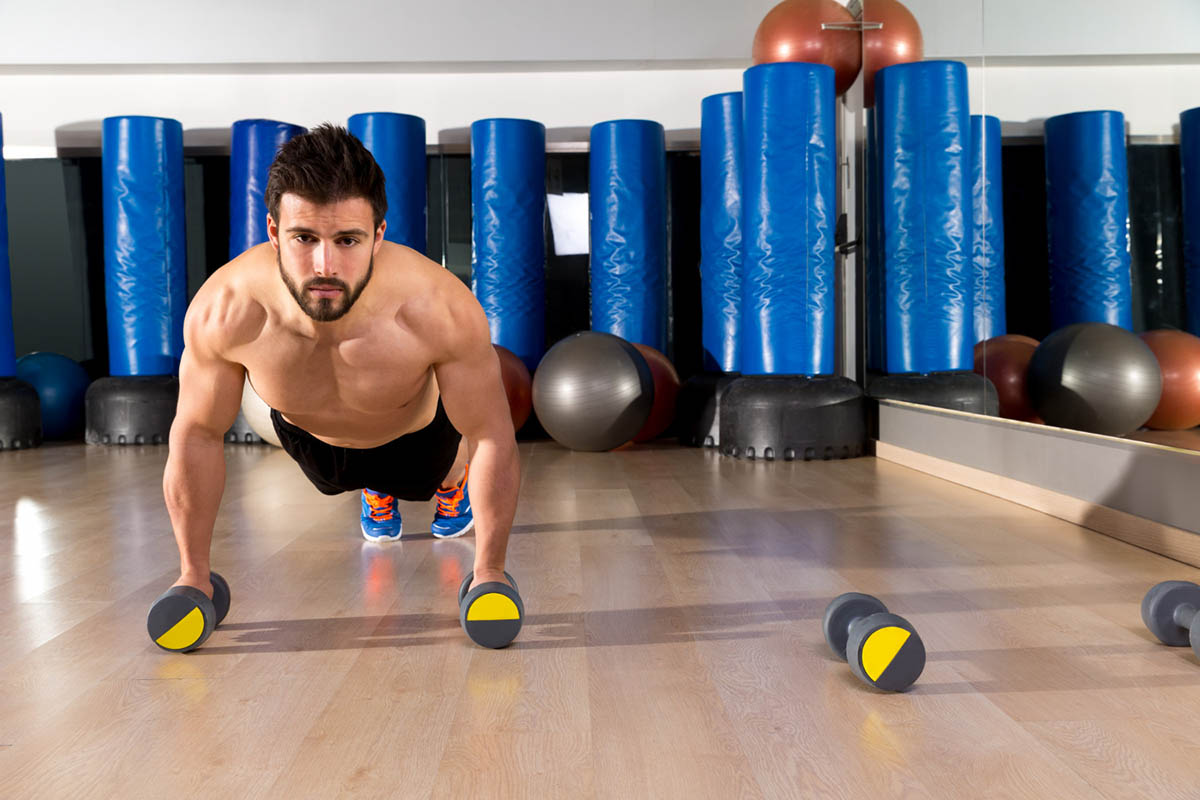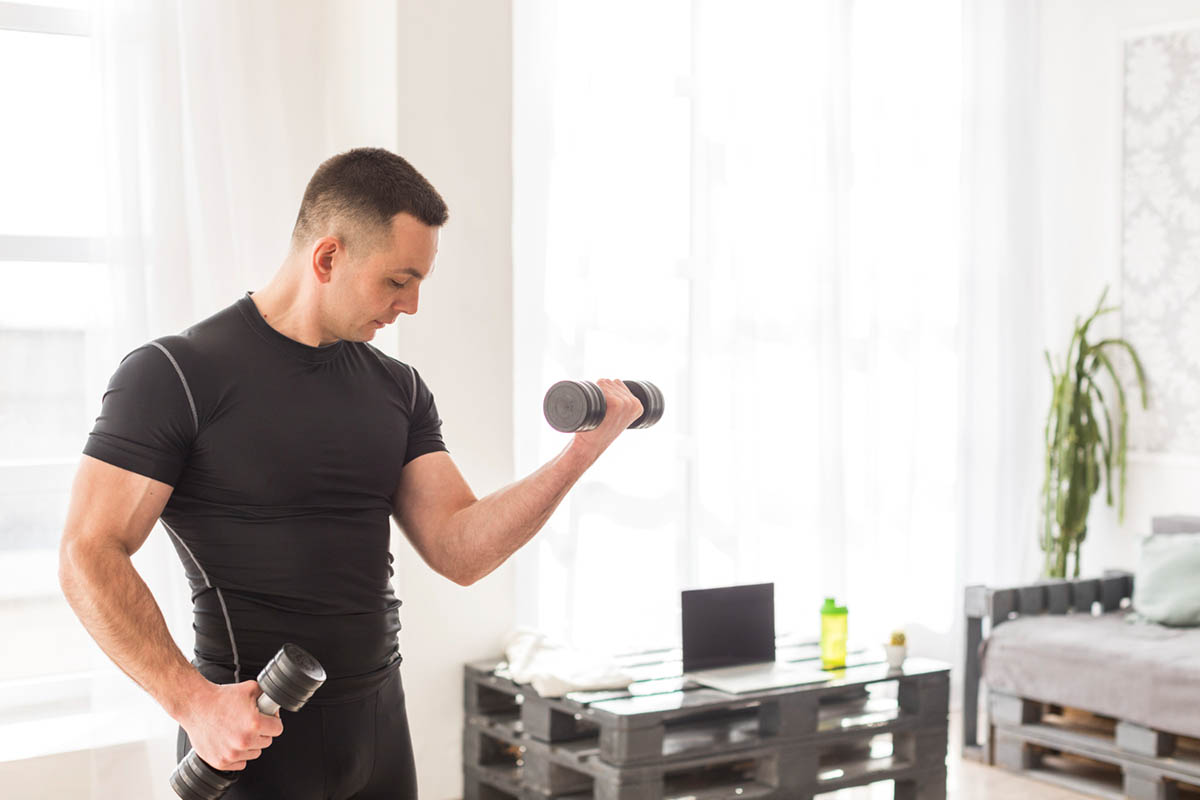Low impact strength training is an effective way to build muscle, enhance joint stability, and improve overall fitness, including cardiovascular health, without putting excessive stress on your body. Whether you’re recovering from an injury, new to exercise, or simply looking for a gentler way to stay fit, low impact strength training can be the perfect solution. In this guide, we’ll explore what low impact strength training is and its benefits and provide you with ten exercises to get started.
What is Low Impact Strength Training?
Low impact strength training refers to resistance exercises that build muscle and improve strength while minimizing stress on the joints and connective tissues. Without low intensity strength training, your body is more prone to injury and does not have time to recover from the demands of life. However, it’s still important to train your muscles effectively while minimizing stress on the joints. Unlike high-intensity workouts such as running or jumping, low impact exercises involve controlled, smooth movements that reduce the risk of injury. This type of training is particularly beneficial for individuals with joint issues, those recovering from injuries, older adults, or anyone seeking a safer way to build strength through a low impact strength workout, as recommended by professionals in physical therapy Colorado Springs.
Is Low Impact Strength Training Effective?
Yes, low impact strength training is highly effective. The current literature suggests the effectiveness of low-intensity workouts on improved physical and cognitive health for older adults. It may be a desired intensity level in promoting health among older adults with better compliance, lower risk of injuries, and long-term sustainability. This type of exercise is not only beneficial for maintaining muscle mass and improving functional fitness, but it also supports better joint health and bone health, which is crucial as we age.
Who Should Consider Low Impact Strength Training?
Low impact strength training is appropriate for various groups of individuals, offering numerous benefits tailored to their specific needs. It is particularly advantageous for older adults aiming to maintain muscle mass, joint health, and balance, as well as for individuals with joint injuries who need to steer clear of impact workouts that might aggravate their conditions. Beginners also find this form of training helpful, as it allows them to gradually build strength without overwhelming their bodies. Additionally, it serves as a safe approach for those recovering from injuries who need to regain strength responsibly. It also provides expectant mothers with suitable exercise options to accommodate their changing bodies during pregnancy.
Benefits of Low Impact Strength Training
Engaging in low impact strength training offers numerous health benefits, including enhanced muscle strength and improved joint stability while significantly reducing the risk of injury. This type of training promotes overall cardiovascular endurance and wellness, making it an excellent choice for individuals of all ages and fitness levels.
Enhances Joint Stability and Balance
Low impact strength training exercises, like lunges and side leg raises, focus on improving joint stability and balance. By strengthening the muscles surrounding your joints, you can reduce the risk of falls and maintain better control over your movements.
Prevent and Relieve Joint Pain
Regular low impact exercise can prevent and relieve joint pain by promoting flexibility and reducing stiffness. Exercises like Pilates and bodyweight squats gently stretch and strengthen the muscles, improving overall joint function.
Muscle Strengthening
Low impact strength training is effective in building and maintaining muscle mass. Exercises like dumbbell chest presses and bicep curls target specific muscle groups, helping to enhance muscle tone and strength without the need for heavy weights or intense movements.
Supports Active Recovery
For athletes and active individuals, low impact strength training can be an excellent form of active recovery. It allows you to maintain your fitness level and continue working on muscle strength while giving your body a break from more intense workouts, making it a great complement to strength training for runners.
Suitable for All Fitness Levels
One of the greatest advantages of low impact strength training is its adaptability. Whether you’re a seasoned athlete or just starting, these exercises can be modified to suit your fitness level. As you build strength and confidence, you can gradually increase the intensity by adjusting the weights or repetitions.
10 Low Impact Strength Training Exercises You Can Try

Pilates
Pilates focuses on core muscles, flexibility, and body awareness, making it an excellent choice for low impact strength training. Incorporating controlled movements and breathing techniques helps alleviate joint pain and improve overall mobility.
Definition:
Pilates is a form of low impact exercise that focuses on core strength, flexibility, and overall body conditioning.
Step by Step Instruction:
- Start by lying on your back with your knees bent and feet flat on the floor.
- Engage your core and lift your head, neck, and shoulders off the mat.
- Extend your legs and arms, reaching toward your toes.
- Perform small, controlled pulses with your arms, keeping your core engaged throughout.
Sets and Repetition:
Complete 2 to 3 sets, aiming for 10 to 15 pulses per set while maintaining control of your movements. Concentrate on engaging your core throughout the exercise.
Planks
Planks are an isometric exercise that targets the core muscles, shoulders, and back while maintaining a low impact on joints. To perform a plank, hold a straight body position on your forearms and toes, engaging your core for stability and balance.
Definition:
Planks are a comprehensive exercise that engages the core, shoulders, and lower back, making them gentle on the joints. This low impact move is effective for building strength and stability throughout the body.
Step by Step Instruction:
- Begin in a push-up position with your arms directly under your shoulders.
- Engage your core and keep your body in a straight line from head to heels.
- Hold this position, keeping your neck relaxed and breathing steadily.
Sets and Repetition:
Maintain the plank position for a duration of 20 to 60 seconds, aiming to complete 2 to 3 sets. Focus on keeping your form steady and controlled throughout each repetition.
Dumbbell Triceps Extension
The Dumbbell Triceps Extension is a targeted exercise that effectively strengthens the triceps while maintaining low impact on the joints, making it suitable for a full-body workout. By simply lifting a dumbbell overhead and lowering it behind your head, you can enhance muscle tone and stability in the upper arms.
Definition:
This exercise focuses on the triceps, effectively promoting strength development in the upper arms. By incorporating this movement, you can enhance muscle definition and stability in this area.
Step by Step Instruction:
- Stand with your feet shoulder-width apart, holding a dumbbell in both hands.
- Lift the dumbbell over your head, keeping your elbows close to your ears.
- Lower the dumbbell behind your head by bending your elbows, then extend your arms back to the starting position.
Sets and Repetition:
Aim to perform 2 to 3 sets, with each set consisting of 12 to 15 repetitions. Focus on maintaining proper form throughout the exercise.
Dumbbell Bicep Curl
The Dumbbell Bicep Curl is a popular exercise that effectively targets and strengthens the biceps while maintaining a low impact on the joints. It is a great addition to any upper-body workout. By raising dumbbells from your sides to shoulder level, you can enhance muscle definition and overall arm strength.
Definition:
Bicep curls primarily target the biceps, which are situated at the front of the upper arm. This exercise is essential for building arm strength and enhancing muscle definition in this area.
Step by Step Instruction:
- Stand with your feet shoulder-width apart, holding a dumbbell in each hand with your palms facing forward.
- Keeping your elbows close to your body, slowly curl the dumbbells towards your shoulders.
- Lower the weights back to the starting position in a controlled manner.
Sets and Repetition:
Complete 2 to 3 sets, aiming for 12 to 15 repetitions in each set. Focus on maintaining proper form for the best results.
Lateral Raises
Lateral Raises are an effective exercise for targeting the shoulder muscles while promoting stability and strength without straining the joints. This exercise is ideal for enhancing muscle tone. By lifting dumbbells out to the sides, you can enhance shoulder definition and improve overall arm functionality.
Definition:
Lateral raises target the shoulders, particularly the deltoids, and are excellent for building shoulder strength.
Step by Step Instruction:
- Stand with your feet shoulder-width apart, holding a dumbbell in each hand at your sides.
- With a slight bend in your elbows, lift the dumbbells out to the side until they reach shoulder height.
- Lower the weights back down slowly to the starting position.
Sets and Repetition:
Perform 2 to 3 sets, aiming for 12 to 15 repetitions in each set. Focus on executing each repetition with proper form for optimal results.
Dumbbell Chest Press
The Dumbbell Chest Press is a fundamental exercise that targets the pectoral muscles while being easy on the joints. This move is essential for improving cardiovascular endurance. It involves lying on your back and pressing dumbbells away from your chest, enhancing upper body strength and stability.
Definition:
The dumbbell chest press primarily strengthens the chest muscles, along with the shoulders and triceps. This exercise is essential for developing upper body strength and stability.
Step by Step Instruction:
- Lie on a bench with a dumbbell in each hand, arms extended above your chest.
- Slowly lower the dumbbells to the sides of your chest, bending your elbows.
- Press the weights back up to the starting position, squeezing your chest muscles.
Sets and Repetition:
Complete 2 to 3 sets, aiming for 10 to 12 repetitions each. Focus on maintaining proper form throughout the exercise.
Single-Arm Dumbbell Row
The Single-Arm Dumbbell Row is an excellent exercise for strengthening the back muscles, particularly the lats while promoting core stability and reducing injury risk. By using one arm at a time, this move minimizes strain on the lower back and encourages proper alignment.
Definition:
This exercise focuses on strengthening the back muscles, with a primary emphasis on the latissimus dorsi. It effectively enhances back strength while supporting overall posture and stability.
Step by Step Instruction:
- Place your right knee and right hand on a bench for support, holding a dumbbell in your left hand.
- Keeping your back flat, pull the dumbbell towards your hip, squeezing your shoulder blade.
- Lower the weight back down to the starting position and repeat on the other side.
Sets and Repetition:
Perform 2 to 3 sets, aiming for 10 to 12 repetitions on each side. Ensure proper form is maintained throughout the exercise for maximum effectiveness.
Side Leg Raises
Side Leg Raises are a gentle yet effective exercise targeting the hip abductor muscles. They promote lower body strength and stability, improve joint stability, and enhance hip range of motion. This low-impact movement is ideal for improving balance and enhancing hip range of motion.
Definition:
Side leg raises target the muscles in the hips, glutes, and outer thighs. This exercise effectively enhances strength and stability in these areas.
Step by Step Instruction:
- Lie on your side with your legs stacked on top of each other.
- Lift your top leg towards the ceiling, keeping it straight.
- Lower the leg back down slowly without touching the bottom leg.
Sets and Repetition:
Complete 2 to 3 sets, aiming for 15 to 20 repetitions on each side. Ensure that control and proper form are maintained throughout the exercise.
Lunges
Lunges are a versatile exercise that targets multiple muscle groups, including the quadriceps, hamstrings, and glutes while improving balance and coordination. Reverse lunges can also be incorporated in various ways. They can be performed in various directions, such as forward or sideways, to add diversity to your workout routine.
Definition:
Lunges are designed to strengthen the legs and glutes, enhancing overall stability and strength in the lower body. This exercise can be adapted in various directions to increase workout variety and effectiveness.
Step by Step Instruction:
- Stand with your feet together and take a step forward with one leg.
- Lower your body until both knees are bent at 90-degree angles.
- Push through the front heel to return to the starting position, then repeat on the other leg.
Sets and Repetition:
Perform 2 to 3 sets, aiming for 10 to 12 repetitions for each leg. Maintain proper form to maximize the exercise’s effectiveness.
Bodyweight Squats
Bodyweight exercises like squats are fundamental for strengthening the quadriceps, hamstrings, and glutes while promoting overall lower body stability. These exercises can be performed on an exercise mat. This low-impact movement is easily adaptable to different fitness levels, making it an excellent addition to any strength training routine.
Definition:
Bodyweight squats are a key exercise that targets and strengthens the legs, glutes, and core. This low-impact movement is essential for building lower body stability and can be modified for various fitness levels.
Step by Step Instruction:
- Stand with your feet shoulder-width apart, toes slightly turned out.
- Lower your body as if sitting back into a chair, keeping your chest up and knees behind your toes.
- Push through your heels to return to the starting position.
Sets and Repetition:
Complete 2 to 3 sets, aiming for 15 to 20 repetitions each time. Ensure you maintain control and proper form throughout the exercises.
Tips for Success with Low Impact Strength Training

When starting a low impact strength training regimen, it’s important to begin slowly by using lighter weights or solely your body weight, allowing for gradual increases in resistance as your strength develops. Maintaining proper form is essential to avoid injuries and ensure the exercises are effective. Fitness routines should be adjusted to include resistance band exercises and bodyweight exercises for variety. Additionally, consistency plays a vital role—shorter, regular workouts (e.g., 30 minutes of exercise 3 times per week) can lead to significant improvements over time. To keep your routine engaging and effective, don’t hesitate to incorporate a variety of exercises that target different muscle groups.
Conclusion
Low impact strength training offers a safe and effective way to build muscle, enhance joint stability, and support overall fitness. Integrating various forms of exercise like aerobic exercise and resistance training can further enhance your fitness journey. With the ten exercises outlined in this guide, you can create a well-rounded workout routine that suits your needs and fitness level. Remember to start slowly, focus on form, and enjoy the benefits of a stronger, healthier body.
FAQs
Can you build muscle with low impact exercise?
Yes, low impact exercises can effectively build muscle when performed consistently with proper resistance.
Can I lose weight with low impact exercise?
Yes, combining low impact strength training with a balanced diet and regular cardiovascular exercise can help with weight loss.
What is low impact strength?
Low impact strength training refers to exercises that build muscle and improve strength while minimizing stress on the joints and connective tissues, often incorporating principles of movement training for enhanced mobility and flexibility.



